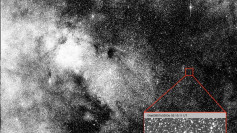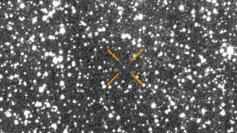The interstellar comet known as 3I/ATLAS is drawing global attention after astronomers observed rhythmic, propulsion-like bursts and an electric-blue glow that defy current models of cometary behavior. NASA's Jet Propulsion Laboratory and the European Southern Observatory have launched joint studies to determine whether the unusual emissions from the object-discovered in July by Hawaii's ATLAS telescope-are natural or something never before seen in celestial mechanics.
Data collected in late October by NASA's JPL revealed short, rhythmic jets emanating from the comet, altering its trajectory in ways not explained by sunlight-driven outgassing. "3I/ATLAS is behaving as if it's correcting its own course... something we'd expect from a spacecraft, not a comet," said Dr. Elena Markov of the European Space Agency in an interview with Space.com. The emissions, she added, appear to occur without solar triggers, implying a potential internal or chemical source.
Scientists at the European Southern Observatory said the object may be venting "supervolatiles"-rare compounds like nitrogen or carbon monoxide that vaporize far from the Sun-creating thrust-like effects. Dr. Markov noted that while most astronomers still favor natural causes, "the data are forcing us to rethink what we know about cometary physics."
Adding to the puzzle, 3I/ATLAS brightened tenfold in just 48 hours, according to the Minor Planet Centre, a rate that cannot be explained by solar heating or reflection. Dr. David Jewitt, a planetary scientist at UCLA, told The Guardian: "Something inside 3I/ATLAS seems to be changing rapidly. It's either venting volatile materials we've never seen before or undergoing structural collapse." Jewitt, who helped identify ʻOumuamua in 2017, said the transformation suggests "internal processes we don't yet understand."
The comet's bright blue hue has deepened the mystery. Typical comets emit green light from diatomic carbon molecules, but Sky & Telescope reported that spectroscopic data from 3I/ATLAS show dominance of ionized nitrogen and oxygen-elements that produce a vivid electric-blue glow. "This blue colouration is a chemical fingerprint we've never encountered in a comet before," said Dr. James O'Donnell, an astrophysicist at Cambridge University. He added that it could indicate isotopic compositions foreign to the solar system.
The blue intensity reportedly increased following the object's sudden brightening, NDTV noted, surprising both amateur and professional astronomers. The anomaly has revived comparisons to 2017's ʻOumuamua, which also sparked debate about possible artificial origins.
Harvard astrophysicist Avi Loeb, who previously suggested that ʻOumuamua might have been an alien probe, told The Independent that while 3I/ATLAS is likely natural, "we should remain open-minded. Every interstellar visitor has surprised us so far, and this one is no exception."
Both NASA's James Webb Space Telescope and the European Southern Observatory's Very Large Telescope are now monitoring 3I/ATLAS as it travels through the inner solar system. A NASA statement confirmed that the next few weeks will be critical in determining whether the bursts continue or subside.






